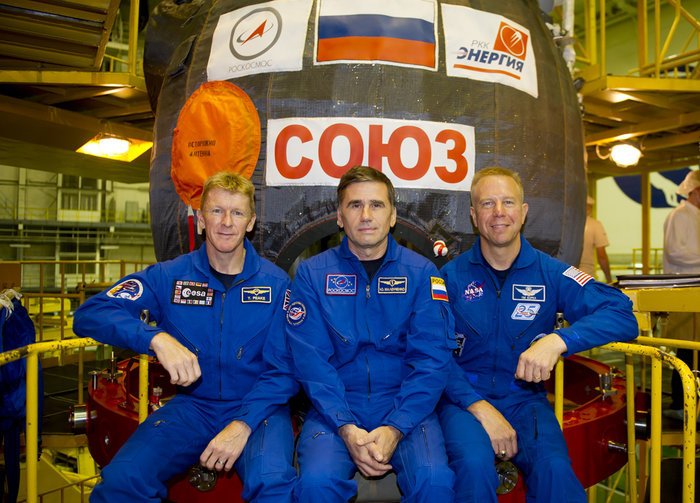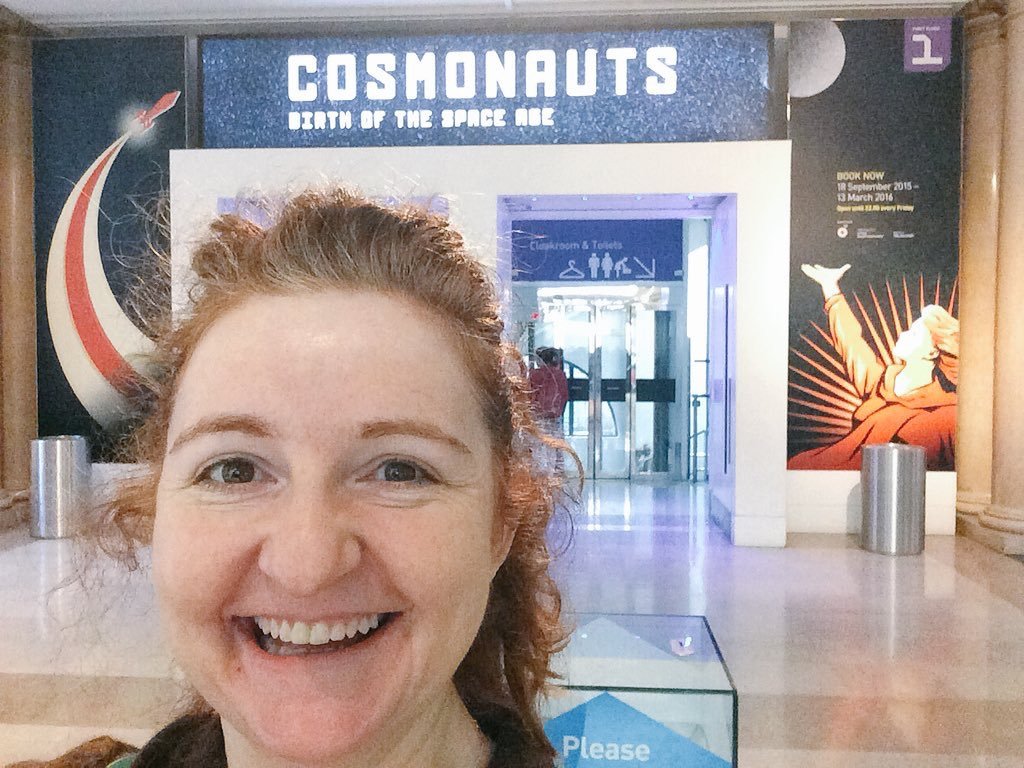For those of us with an interest in all things Space, we had been waiting for December for quite some time. You might assume that I’m referring to the Star Wars premiere (which was great and a big moment for me too), but I’m actually talking about an event that occurred 3 days earlier. At 11.03am on Dec 15th to be precise and the launch of UK’s first ESA (European Space Agency) astronaut, Tim Peake accompanied by Russian Space Agency’s Yuri Malenchenko & NASA’s Timothy Kopra (NASA) to the International Space Station (ISS) and the start of Expedition 46.

This is a particularly special mission on the ISS because it is possibly the closest Ireland will ever get to having an astronaut in space (before I get there, that is). This is because, at present Ireland currently contributes €17million annually to be an ESA member state. Every member state can select a range of options to participate in and Ireland has not included the Human Space programme in its selection. Our contribution does however permit Irish companies and research teams to bid for ESA contracts primarily in the engineering, aerospace, software, electronics, optoelectronics and telecommunications sectors and in developing products and applications, which utilise space based systems. Great opportunities for Irish business, but sadly, no Irish astronauts anytime soon.
In light of the significance of the day, I decided to head over to London and join in the ‘Principia’ party (Tim’s mission was named ‘Principia’ in a competition across UK schools in 2014) happening all day at the Science Museum and so, I booked a flight to Gatwick, found a cheap hotel nearby and reserved tickets to some space-related talks and exhibitions. Well that was the plan anyway.
At 11.03am (launch time) I found myself on the Gatwick Express stuck in a carriage somewhere near Croydon because of some sort of a signal failure, so I turned on the data roaming on my phone and watched the launch from Baikonur, Kazakhstan via BBC News livestream. Glued to my phone in a standing room only carriage, an American traveller asks me what I’m looking at and so I share my screen, happy to have someone to join in on the excitement of the moment. But interestingly we were the only people on our carriage who seemed to be aware of what is happening 300 km above us in the skies. It really was a pretty flawless launch and we watched each stage of the 3 rockets disengage as Tim and his crewmates travelled towards weightlessness and the International Space Station. Throughout the livestream we saw a talisman or good luck charm in shot, dangling in front of the control panel, similar to those trinkets we place on our rear view mirrors. Every mission brings their own talisman, and this is one of the many superstitions that astronauts must follow as part of their mission.

Even though the 3 crewmates seem squeezed into that tiny Soyuz spacecraft at the top of this massive rocket, a thumbs up from Tim let us know that everything was going fine. One would almost think that this is a reasonably straightforward procedure, a well-oiled and tried and tested process. But lets not underestimate the physical demands of spaceflight- first of all, you enter a spacecraft wearing a space suit weighing almost 40 kg (40 bags of sugar). You wait for almost 2 hours before lift-off with a catheter inserted, wearing an Astronaut nappy and no food, just water, fed through a camel drinking bag. Also you’re sitting on top of a rocket with 2000 metric tonnes of explosive fuel beneath you. In terms of scale, you are like a mosquito strapped to the front of a Formula 1 car, which, soon, you will have to manoeuvre around chicanes at top speed to bounce out of Earth’s atmosphere.
And then during lift-off, the acceleration is so great you clear the 60 meter launch tower (more than twice the length of the Spire) in seconds already travelling at 160 km per hour. Because the G-Force is so strong, you’re unable to move any part of your body. For instance, after about 6 minutes you feel like you weigh 6 times heavier as acceleration pushes you and pins you in to your seat, as you climb towards 40,000 km/hr (or 11km/sec), to break through Earth’s gravitational pull.
And then at 8 and a half minutes post-lift-off, as you leave Earth’s atmosphere, the engines turn off and you instantly go from feeling really heavy to suddenly feeling weightless. I’ve read about launches a lot over the years, but it was really cool to watch that moment live, standing on the train to Victoria station, as me and my new American friend watched Tim in that tiny Soyuz capsule suddenly experience weightlessness, discernible merely by that talisman on the control panel, as it was pulled downwards by the engine switch-off and then suddenly floated across the screen – a clear indication that the crew are well and truly experiencing weightlessness from this moment on.
And then the excitement was over (for a bit anyway) as the livestream ends because we can no longer see the spacecraft as they continue their approach to the ISS. The train starts to move again and we finally leave the Croydon area and arrive at Victoria. As I alight, I catch a glimpse of my Amercian pal, and we exchange a small nod and quiet smile, I guess to acknowledge the moment we just shared was ours alone on that carriage. And how lucky we were to have caught it.

As soon as I drop off my bags, I head straight to the Science Museum in South Kensington to the ‘Principia’ party and immediately mingle with fellow spacenuts and enthusiasts. The atmosphere here is electric, stickers, badges and commemorative ‘Principia’ programmes freely available. Its hard to decide where to head to first, there is so much to see and special events happening everywhere around us. I hadn’t realized before arriving that the BBC were broadcasting from the Science Museum with their ‘Stargazing Live’ programme with our very own Dara O’Briain and Prof Brian Cox. There were screens everywhere to observe the moment when the 3 existing crew aboard the ISS would open the hatch and officially welcome Tim, Yuri and Timothy aboard and begin Expedition 46 in earnest. And until such time, we had more than enough to occupy us.

There’s a delay in the official hatch opening so Dara and Brian invite Helen Sharman (the first Briton in Space who visited the Mir Space station in 1991) and Commander Chris Hadfield (Canadian astronaut, who was aboard the ISS in 2013 as part of Expedition 34/35) to share their experiences of launch day when they experienced their first time in Space. Throughout all this we toggle between these interviews and a live stream from the ISS with NASA Astronaut Scott Kelly (who is spending a whole year in Space) and Russian Space Agency’s Mikhail Korniyenko and Sergey Volkov making preparations for the official hatch opening. On more than one occasion we think the hatch is about to open, but it’s a false alarm. And then finally, we’re given a 10-second countdown, which we all join in and suddenly Tim appears on the ISS live stream and he’s in. Hugs all around between new passengers and the existing ISS crew and we’re already on to a live link up to hear about how the day went for them.

It was a fabulous feeling to be at the Science Museum, I felt part of the experience, especially since I met some old colleagues from ESA (who I met last year when making ‘To Space‘) and had the privilege to stand among them during that historic hatch opening. I met others from the UK Space Agency and other agencies who had been working towards this evening for over 2 years. For some, their job was done and it was time to kick back and enjoy the moment while sipping champagne with friends and family. But for others, especially the communications team, this is only just the beginning, Tim’s mission is 6 months long and it is their responsibility to share his trip with the public. Up since the early morning to report on Tim’s progress, they already looked exhausted, but their spirits were high – such is their passion for Space. That’s the thing about all the people I have met working in the Space industry, with their savage work ethic they make it happen, whatever the cost.

After the interviews, the museum vacated pretty quickly. Everyone was smiling but it was a long day for many. The UK Space agency were planning this launch day for 2 years, Tim was preparing for over 5 years and the ESA were planning this mission for a lot longer than that. Well done everyone. It was a fab day which far exceeded any expectations that I had. I never made it to any of the talks or exhibits in the end. I didn’t need to. There was too much going on just hanging out with people. I hadn’t considered the people that would be there to share in the excitement, and it was this element that made the night so special. A bit naïve of me really, when you think of the thousands of people behind making this moment happen for Tim and his crewmates. From the engineers who made the rocket, to all the trainers, and teams behind preparing Tim for every moment of his 6 months ahead, it’s all about people. Space only happens because of the people.
There are many more great days to share with Tim over the next 6 months on his ‘Principia’ mission and I’m already wondering what’s planned for re-entry on May 2016? Think I may be back in the Science Museum…
Follow Tim’s progress in Space @ESA twitter or through Niamh’s reporting @niamhiepoos and on the ESA website.
